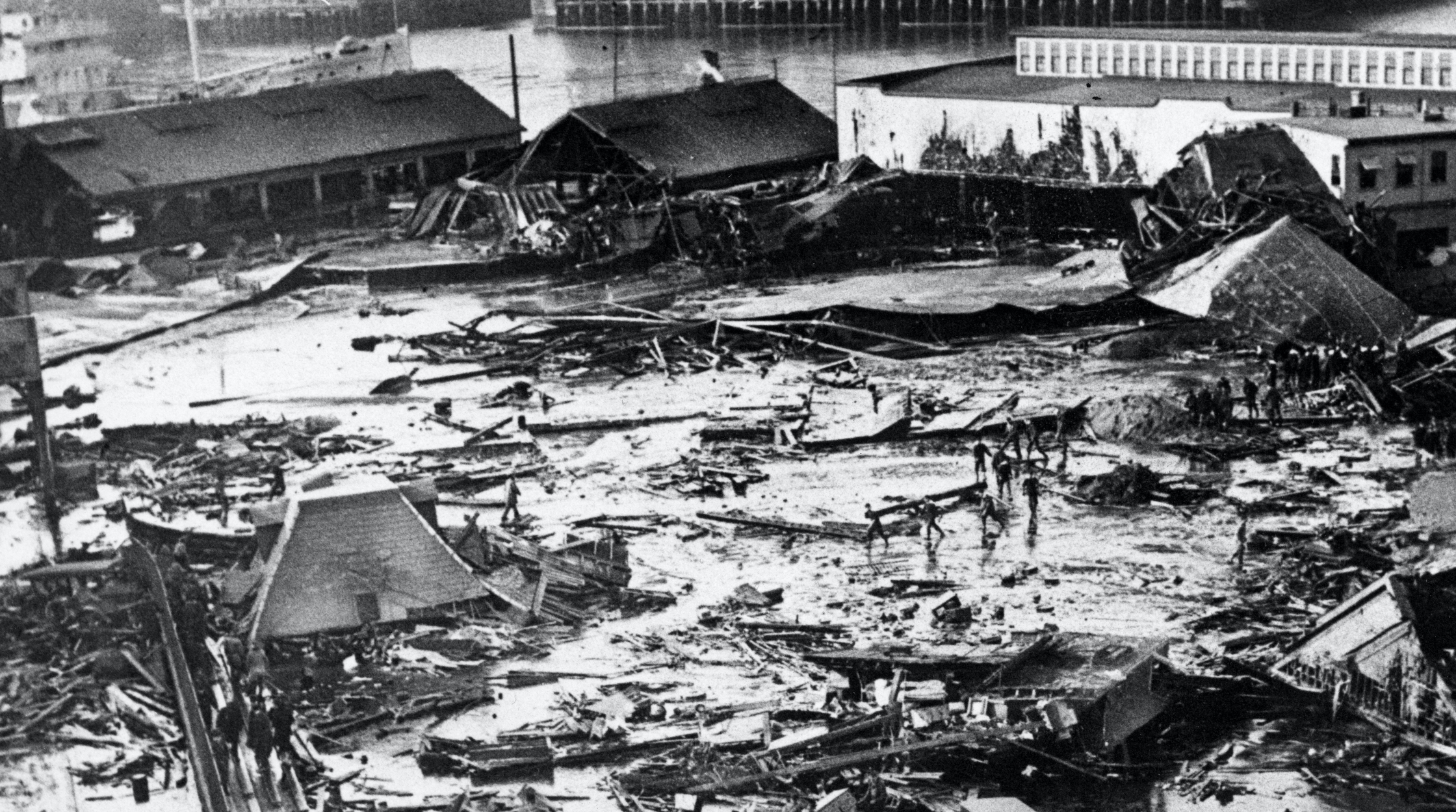The Great Molasses Flood of 1919

Commonly used to make sugar or rum, in 1915 the Purity Distilling Company began using their molasses to make high explosives, by breaking down the sticky goo into its basic chemical components.
With explosives in high demand during World War One, over the following four years, neighbors in the crowded North End community near the 2.3 million gallon tank complained that the molasses was leaking from the tank’s many rivets. This prompted the company to paint the tank brown in an effort to conceal the viscous ooze.
When was the Boston Molasses Flood?
On January 19th, 1919, after workers pumped in a fresh shipment of warm molasses from Cuba atop frigidly-cold molasses already stored in the tank, the tank exploded violently, sending a wall of molasses coursing through nearby streets at speeds upwards of 35 miles per hour.
At first, eyewitnesses reporting hearing machine-gun fire, but instead, it was rivets popping off the tank, followed by huge chunks of exploding sheet metal, which destroyed the elevated train line along Commercial Street, along with the complete destruction of the Police Fireboat Station.
Who Died in the Boston Molasses Flood?
The molasses flood took the lives of 21 people and injured 150 others, while hundreds of injured horses would later be put down when they became trapped in the sticky torrent of goo.
Initially, the Purity Distilling Company blamed the explosion on an anarchist who had been sending the company letter bombs, but the real culprit was shoddy construction and fermentation in the tank.
In an age when little government oversight or regulation was the rule of the day, the disaster would lead to a cascade of regulations imposed upon Boston industries.
Once the mess had been cleaned up and rebuilt, the event became part of an already rich Boston folklore, while residents claimed for decades after the flood that on hot summer days, they could still smell the sweet odor of molasses throughout the entirety of the North End.
